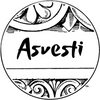What is Hydrated Lime for Painting
In the world of sustainable and eco-friendly paint alternatives, hydrated lime has emerged as a transformative choice for those seeking a natural and timeless finish.
The application of hydrated lime for whitewash, also known as hydrated lime wash, goes beyond conventional painting methods, offering a unique and visually captivating solution that has been embraced for centuries.
Hydrated Lime for Whitewash: A Historical Perspective
The use of hydrated lime for whitewash dates back to ancient civilizations, where it was employed not only for its aesthetic appeal but also for its natural antibacterial properties. From the sun-drenched walls of Mediterranean villages to the historic charm of colonial homes, the timeless beauty of hydrated lime whitewash has left an indelible mark on architectural history.
The Artistry of Hydrated Lime Wash
Hydrated lime, derived from limestone through a process of hydration, creates a smooth and chalky finish when mixed with water. This unique texture, combined with the natural brightness of lime, gives surfaces a velvety appearance that transcends the limitations of traditional paint.

When used for whitewashing, hydrated lime imparts a luminous quality to walls, ceilings, and other surfaces, creating an atmosphere that is both inviting and soothing.
Sustainable and Environmentally Friendly
One of the standout features of hydrated lime for painting is its eco-friendly nature. Derived from natural limestone, hydrated lime is a non-toxic and sustainable alternative to conventional paints. Its production process has a lower environmental impact, making it an excellent choice for those who prioritize green living and wish to reduce their carbon footprint.
Where Can Hydrated Lime Wash It Be Applied?
Hydrated lime wash is a versatile choice that can be applied to a variety of surfaces. From interior walls and ceilings to exterior facades, hydrated lime paint adapts to different materials, such as plaster, stucco, and brick. Its breathability allows for moisture regulation, preventing issues like mold and mildew and contributing to a healthier indoor environment.
When embarking on a painting project with hydrated lime, proper surface preparation is crucial. Surfaces should be clean, dry, and free from any contaminants to ensure optimal adhesion and longevity of the finish. The application process involves mixing hydrated lime with water and applying thin coats, allowing each layer to dry completely before adding the next.
